1 . There are so many amazing cultures around the world, each having their own unique set of traditions. In this post, we will explore four interesting cultural traditions around the world.
Giving cinnamon (肉桂) in Denmark
In the western part of Denmark, if a person is not yet married by the time they reach their 25th birthday, they will be restrained by their friends and have cinnamon thrown on them in the New Year’s Eve. The unique tradition can be translated to “giving cinnamon”.
The Festival of Light in Thailand
The Festival of Light, also called “Loy Krathong”, is on the evening of the full moon on the 12th month of the Thai lunar calendar. The maker of the krathong attaches a candle to the handcrafted flower arrangement, which will be floating down riverways to pray for financial luck and happiness in the coming year.
Wife-carrying Competition in Finland
More of a competitive sport than it is a tradition, a Wife-carrying Competition in Finland. Athletes participate in a race where a male competitor carries a female competitor through an obstacle course. The winners are the fastest team, which will be awarded an interesting bonus — the wife’s weight in beer.
Baking money into food in Bolivia
While many people anticipate watching fireworks and tasting delicious dishes on the New Year’s Eve, Bolivians bake money into sugary dessert such as cakes. The lucky person receiving the monetary surprise can look forward to enjoying a prosperous year.
Do you want to know more? Check out the following post about traditions from around the world.
1. Who will be thrown cinnamon on in Denmark?| A.A 24-year-old fiancée. | B.A single person over 25. |
| C.A father on his 25th birthday. | D.A 26-year-old divorced friend. |
| A.Both are celebrated in the New Years’ Eve. | B.Both are concerned with the moon goddess. |
| C.Both involve fireworks and delicious dishes. | D.Both are related to people’s wish for wealth. |
| A.https://www.worldwide.com/blog. | B.https://www.artexhibit.com/portrait. |
| C.https://www.livebroadcast.com/soccer. | D.https://www.onlinevideo.com/diasters. |
2 . The Feast of the Seven Fishes is an Italian-American tradition that dates back to an immigration (移民) wave in the 1900s. The Italian American tradition of the “Feast of the Seven Fishes” has appeared in movies and recently in the hit show The Bear. But talking of the origin, you’ll get many different answers. The Feast of the Seven Fishes is a dear tradition to many Italian Americans who enjoy at least seven different seafood dishes on Christmas Eve.
A vast majority of Italian immigrants to the United States were from rural Southern Italy at the turn of the 19th century. They came to America because there were jobs from building railroads to skyscrapers. Friends and families found success and brought their loved ones to the U.S. Some say fish was chosen for the Feast because it was plentiful for impoverished families in Southern Italy. Others say the sea represented Italian Americans’ connection between their old and new homes.
Writer and director Robert Tinnell made a comic in 2004 about his experience with the Feast of the Seven Fishes, which he later made into a 2019 movie. Growing up in North Central West Virginia, he fondly remembers his great grandmother organizing the Feast. After she died, his grandfather and other men in the family took over. That particular manly activity is something that the first Italian immigrants would have also performed out of necessity: men came to America first, without their wives and daughters.
However, knowledge about where to shop, when to prepare, how to cook, the history behind the meal and family traditions soon became the responsibility of mothers to pass down to their daughters, says Di Giovine, a professor at West Chester University of Pennsylvania. They are also likely the ones who have the final say in making changes to recipes. Over time, families often adjust the menu to make things easier, cheaper, more abundant, and more accommodating of dietary restrictions.
1. What do we know about the Feast of the Seven Fishes?| A.It relates to a story of Italians. | B.It’s made up of seven fishes. |
| C.It marks a vital historic event. | D.It’s about Americans in Italy. |
| A.Needy. | B.Unfortunate. | C.Extended. | D.Uneducated. |
| A.He loves fishes. | B.He’s an editor. |
| C.He’s emotional. | D.He teaches writing. |
| A.A Fish-making Method | B.A Festival Tradition |
| C.A Cookery Book | D.A Special Celebration |
3 . We will soon enter the Year of the Dragon. Or should that be the Year of the Loong? That is a question that has aroused heated debate.
Influenced by Greek mythology (神话), the dragon is often the keeper of treasure, so the dragon is often a symbol of greed and destruction. In addition to the image of “Saint George slaying the dragon” in the medieval manuscripts of Europe, there is also the Great Red Dragon in the Christian Bible’s Book of Revelation, which refers to Satan and the end times. For Europeans, dragon is usually a monster keeping distances away from people, a symbol of darkness. With four legs and two huge black wings, they can spit fire or even poison gas out of their mouth, with great destructive power.
Such symbolic resonance (共鸣) can be seen in the enduring appeal of dragons in Western popular culture today where they are important parts of fantasy literature, films, video games, and TV shows, often representing a mix of awe-inspiring and fearsome qualities that put them at the heart of struggles between good and evil.
Contrary to the evil image of European dragons, Chinese dragons traditionally symbolize different meanings. The loong has been a central symbol in Chinese culture for thousands of years, and its origins can be traced back to early Chinese civilization through mythology, folklore and religious beliefs. They even had jobs, as in Chinese legends dragons were appointed head of the four seas where they must keep order, as well as the job of bringing rain to the earth. Since loong were believed to have control over natural phenomena such as rain, storms and water, and were associated with the life-giving properties of water and the fertility of the land, loong became symbols of strength and good fortune, and they became associated with balance, harmony and the natural order of the universe.
The differences in perception of the mythical creatures in China and the West are rooted in their different cultural values. Thus the answer to the question at the beginning is clear: Whether or not to use loong instead of dragon is not important. What is important is that as we enter a new lunar year people globally appreciate the cultural values embodied in such Chinese symbols as loong.
1. Which of the following best describes Westerners’ attitude towards the dragon?| A.Lovable. | B.Frightened. | C.Acceptable. | D.Favorable. |
| A.By presenting numbers. | B.By telling ancient stories. |
| C.By making a definition. | D.By making comparison. |
| A.The long history of loong. | B.The various jobs loong had. |
| C.People’s positive beliefs in loong. | D.Loong’s ability to control nature. |
| A.People only in China appreciate the cultural values. |
| B.Different cultures have different understanding of dragon. |
| C.It’s important to identify the differences between dragon and loong. |
| D.Everyone expects to enter a new lunar loong year. |
4 . Chinese state media has praised a viral video series telling the story of a jade teapot coming to life and escaping from the British Museum to make its way back home.
The set of three short episodes, entitled Escape from the British Museum, shows the teapot turning into a young woman in a green dress, who then asks a London-based Chinese journalist to help her reunite with her family.
The plot line taps into growing Chinese criticism (批评) of the British Museum after reports last month that more than 1, 500 priceless objects were missing, stolen or damaged.
In August the state media Global Times called for the return of Chinese artefacts from the museum “free of charge”. “The huge loophole (漏洞) in the management and safety of cultural objects in the British Museum have led to the falling of a long-standing and widely spread claim that ‘foreign cultural objects are better protected in the British Museum’,” it said. It strongly supported the video series for touching on a “powerful message” about the importance of cultural heritage and reflecting “Chinese people’s eagerness for the return of the Chinese cultural relics”.
State broadcaster CCTV also gave the short films a glowing review saying: “We are very pleased to see Chinese young people are passionate about history and tradition. We are also looking forward to the early return of Chinese artefacts that have been displaced overseas.”
The museum incident made headlines around the world and revived earlier demands by the Chinese media to restore the country’s relics.
The new three-part show has set off a wave of nationalism among viewers, with many praising the creative plot that reduced them to tears by showing how the teapot experienced the happiness of returning to China to see pandas and watch a flag-raising ceremony on Tiananmen Square. “May all the cultural relics abroad return home as soon as possible!” said one of tens of thousands of people who commented on social media sites.
1. What can be learned about Escape from the British Museum?| A.It is filmed by the state media. |
| B.It consists of three short episodes. |
| C.It is supported by the British Museum. |
| D.It shows how a green princess makes her way home. |
| A.Goes against. | B.Agrees with. | C.Makes use of. | D.Brings about. |
| A.Disapproving. | B.Objective. | C.Tolerant. | D.Supportive. |
| A.The reputation of Chinese artefacts worldwide. |
| B.The irresponsibility of the British Museum missing a teapot. |
| C.The influence of Chinese state media on the global viewers. |
| D.The popularity of the series about the return of Chinese relics. |
5 . Chinese people love food made of flour. In the hands of skilled artisans (手艺人), flour is made into lovely models of people or animals to be enjoyed and played with, which brings a unique kind of pleasure. This art form is called dough figurine (面塑). Among the various art styles of dough figurines, Beijing’s Dough Figurine Lang is a unique folk art, which is filled with the rich history and customs of the capital city. In 2008, it was included in the list of national intangible (非物质的) cultural heritage.
It was created by Lang Shao’an. Most of the dough figurines are animals and characters from legends, historical stories, and local operas. The finished product is either put at the end of a thin stick or on a table for display. Some are mostly for children to eat or play with, with simple forms and vivid decorations, while some are fine pieces of artwork for display only. For this reason, during the making process they are often mixed with additives (添加剂) to better preserve the finished products.
Lang Jiaziyu, born in 1995, is the third-generation inheritor (继承人) of Dough Figurine Lang. When he was 15, he created Beijing Olympic Mascot (吉祥物) shaped dough figurines which were highly praised. He looks a bit more fashionable than other folk artisans. In his skilled hands, pop culture icons (偶像) are popular with young people.
Like most of the other intangible cultural heritage handicrafts in China, Dough Figurine Lang does not get as much attention from the public. Few young people are willing to take the time to master a skill that does not make money, which has led to a decline in the number of those who are devoted to the handicraft. Good handicrafts need the devotion of artisans from one generation to another.
1. What is special about Dough Figurine Lang?| A.It reflects Beijing’s culture. |
| B.It is created by many famous artists. |
| C.It shows people’s lifestyles and beliefs. |
| D.It is popular with both tourists and the locals. |
| A.To make dough figurines taste good |
| B.To keep colors brighter and lasting longer |
| C.To help shape dough into various forms. |
| D.To better preserve the finished products |
| A.Suggestions for other folk artisans. |
| B.Different art styles of dough figurines. |
| C.Lang Jiaziyu’s accomplishments as an artisan |
| D.The popularity of modern dough figurines |
| A.To call on people to master a skill. |
| B.To appeal to people to value this folk art. |
| C.To teach people ways to appreciate the handicraft. |
| D.To persuade people to protect national cultural heritage. |
6 . FROM PROBLEMS TO SOLUTIONS
Economic development is necessary if we want to improve society. There comes a time when the old must give way to the new, and it is not possible to preserve everything from our past as we move towards the future. Finding and keeping the right balance between progress and the protection of cultural sites can be a big challenge.
Big challenges, however, can sometimes lead to great solutions. In the 1950s, the Egyptian government wanted to build a new dam across the Nile in order to control floods, produce electricity, and supply water to more farmers in the area. But the proposal led to protests. Water from the dam would likely damage a number of temples and destroy cultural relics that were an important part of Egypt’s cultural heritage. After listening to the scientists who had studied the problem, and citizens who lived near the dam, the government turned to the United Nations for help in 1959.
A committee was established to limit damage to the Egyptian buildings and prevent the loss of cultural relics. The group asked for contributions from different departments and raised funds within the international community. Experts investigated the issue, conducted several tests, and then made a proposal for how the buildings could be saved. Finally, a document was signed, and the work began in 1960.
The project brought together governments and environmentalists from around the world. Temples and other cultural sites were taken down piece by piece, and then moved and put back together again in a place where they were safe from the water.In 1961, German engineers moved the first temple. Over the next 20 years, thousands of engineers and workers rescued 22 temples and countless cultural relics. Fifty countries donated nearly $80 million to the project.
When the project ended in 1980, it was considered a great success. Not only had the countries found a path to the future that did not run over the relics of the past, but they had also learnt that it was possible for countries to work together to build a better tomorrow.
The spirit of the Aswan Dam project is still alive today. Perhaps the best example is shown by UNESCO, which runs a programme that prevents world cultural heritage sites around the world from disappearing. If a problem seems too difficult for a single nation, the global community can sometimes provide a solution.
1. In which year is the first temple moved?| A.1959. | B.1961. | C.1960. | D.1980 |
| A.Because they wanted to control floods and help economic development. |
| B.Because they thought it not necessary to preserve everything from the past. |
| C.Because the project could bring together governments and environmentalists from around the world. |
| D.Because they could get help from the global community. |
| A.They were rebuilt in other higher places. |
| B.They were moved to places with no water. |
| C.They were preserved in museums. |
| D.They were taken down piece by piece and moved to other places where they would be safe from the water. |
| A.2 years. | B.19 years. | C.20 years. | D.21 years. |
7 . While tea may have originated in Asia, now there are many countries all around the world that have tea woven into their food culture and traditions. This is one of the very special parts of tea as it has a way of connecting people all over the world in different ways and ceremonies that finally all results in a group of people sitting together and enjoying a cup of tea.
Chinese tea culture
Since China is viewed as the birthplace of tea, it is no wonder that Chinese tea culture is rich with history and tradition. Today, Chinese tea continues to be used in Chinese medicine and is commonly consumed on both casual and formal occasions both for personal enjoyment and to represent Chinese cultural traditions.
Japanese tea culture
Japan also has a long history with tea,especially Japanese Matcha, which is a kind of ground green tea that is commonly used in Japanese tea ceremonies and only in recent years became popular in Western culture.
British tea culture
When many people think about tea, British tea culture is what comes to mind. A hot cup of English Breakfast or Earl Grey tea serves with a little milk and a biscuit in the afternoon as a pick-me-up for the day. Even though tea may not be native to England, this British tea tradition is still going strong today.
Moroccan tea culture
When you visit Morocco, it is hard to miss the outstanding tea culture that is such a large part of Moroccan hospitality. Before any gathering, negotiation, or sale of a product, a pot of mint tea is always prepared and served among the host and guests. This is an expression of Moroccan tradition and hospitality, which should always be accepted by guests as a sign of appreciation and respect to the host.
1. Why can tea find its way into various food cultures?| A.It originates in Asia. | B.It forms different ceremonies. |
| C.It gets people connected easily. | D.It allows people to sit together. |
| A.China. | B.Japan. | C.Britain. | D.Morocco. |
| A.Healthy You. | B.Social Insight. | C.Cultural Corner. | D.Itchy Feet Travel. |
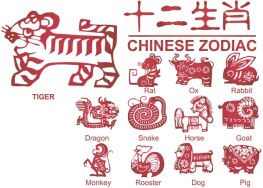
Chinese zodiac signs represent twelve different types of personalities. The zodiac traditionally begins with the sign of the Rat, and there are many stories about the origins of the Chinese Zodiac which explain why this is so. The Chinese animal zodiac, or sheng xiao in pinyin (literally translated as “born resembling”), is a rotating cycle of 12 years, with each year being represented by an animal and its character or features.
Traditionally these recurring animals were used to date the years, a different animal for each year, with each animal year repeated every 12 years. There are altogether 12 animals, which are, in order: rat, ox, tiger, rabbit, dragon, snake, horse, ram, monkey, rooster, dog and pig.
Actually the Chinese animal zodiac has certain similarities with the Western zodiac. Both have rotating cycles divided into 12 parts, and both imply the influence of each sign on a person’s personality. However, the differences are major. The Chinese animal zodiac is divided into years, while the Western zodiac is divided into months, and the animals are not associated with constellations.
There is no connection between the twelve animals of the Chinese Zodiac and the twelve signs of the Western Zodiac.
Western astrology is based upon a system which uses the path of the sun (and the moon and planets) through the heavens and look to the constellations (e.g. Aries, Taurus, Gemini etc) which lie along this path.
The Chinese system, on the other hand, focuses on Zi Wei or the Pole Star and the constellations which relate to it.
The Chinese system of time keeping is based on the Heavenly Stems and Earthly Branches forming a 60 year cycle. There are 10 sets of Heavenly Stems and 12 sets of Earthly Branches. The 10 Heavenly Stems have to be repeated 6 times in order to match the 12 Earthly Branches which are repeated 5 times to give you sixty pairs of stems and branches.
The names of the year are taken from the pairs of Stems and Branch in the sixty year cycle. For example 1924 marks the start of the sixty year cycle and has the name of Jia Zi (Jia is the Stem and Zi the Branch). This cycle is repeated every sixty year.
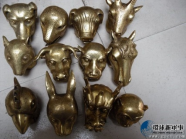
Rat—Charming
Year of Birth: 1912, 1924, 1936, 1948, 1960, 1972, 1984, 1996, 2008, 2020
Personality: Quick-witted, clever, clairvoyant, short-tempered, ambitious and manipulative. They are charming and attractive to the opposite sex, loyal and generous to people that they considers part of their pack. They are resourceful and eager to seek knowledge.
Ox—Patient
Year of Birth: 1913, 1925, 1937, 1949, 1961, 1973, 1985, 1997, 2009, 2021
Personality: Calm, diligent, modest, honest, straight-forward, easy-going but sometimes can be stubborn. A born leader, the ox has a tendency to inspire confidence in others. They hate failure and don’t like to be challenged.
Tiger—Sensitive
Year of Birth: 1914, 1926, 1938, 1950, 1962, 1974, 1986, 1998, 2010, 2022
Personality: Thoughtful, rebellious, sensitive, success-oriented, humanitarian, impatient and aggressive. Tigers are embodiment of lordliness and power. They are respected by other people, though they sometimes act antiauthoritarian and get into conflict with authority or elder people.
Rabbit—Articulate
Year of Birth: 1915, 1927, 1939, 1951, 1963, 1975, 1987, 1999, 2011, 2023
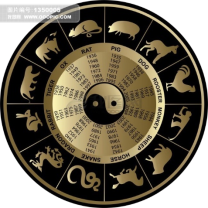
Personality: Popular, amiable, affectionate, sincere, and opportunistic. Rabbits enjoy being surrounded by family and friends. Sometimes they tend to get sentimental, but rarely lose temper. Being cautious and conservative, they are said to be financially lucky and will be successful in business.
Dragon—Healthy
Year of Birth: 1916, 1928, 1940, 1952, 1964, 1976, 1988, 2000, 2012, 2024
Personality: Energetic, intelligent, gifted, healthy, charismatic, noble and brave. The dragon is a popular and respected individual. A natural born leader, the dragon tends to inspire trust and confidence, and is good at giving orders, though sometimes they can be tactless and brash.
Snake—Lonely
Year of Birth: 1917, 1929, 1941, 1953, 1965, 1977, 1989, 2001, 2013, 2025
Personality: Smart, intuitive, sympathetic, analytical, cautious, introverted and insecure. Snakes prefer to be loners, relying strongly on their own intuition and judgment, and have little faith in other’s judgment. They hold a mine attitude towards money. Being financially lucky, they seldom worry about money.
Horse—Popular
Year of Birth: 1918, 1930, 1942, 1954, 1966, 1978, 1990, 2002, 2014, 2026
Personality: Sharp-witted, cheerful, smart, open-minded, talkative and talented. Horses enjoy traveling, entertainment and large crowds. An independent thinker, the horse does not like to hear other peoples’ suggestions. They sometimes tend to talk too much and become impatient
Goat—Elegant
Year of Birth: 1919, 1931, 1943, 1955, 1967, 1979, 1991, 2003, 2015, 2027
Personality: Gentle, calm, shy, creative, understanding, insecure and pessimistic. They worry a lot and like to complain. Appearance and material comfort are very important to them. They need lots of support, love, care, and reassurance.
Monkey—Clever
Year of Birth: 1920, 1932, 1944, 1956, 1968, 1980, 1992, 2004, 2016, 2028
Personality: Upbeat, clever, inquisitive, sociable and flexible. They are good at solving problems and making decisions. Monkeys can be loose cannons because they lack self-control and give up easily.
Rooster—Good Thinkers
Year of Birth: 1921, 1933, 1945, 1957, 1969, 1981, 1993, 2005, 2017, 2029
Personality: practical, cautious, conservative, alert, shrewd and sturborn. Roosters do not get along very well with others because they seem boastful and emotionally cold. They like dreaming and bravado. Firm in sticking to their own decisions, they often speak their mind.
Dog—Loyal
Year of Birth: 1922, 1934, 1946, 1958, 1970, 1982, 1994, 2006, 2018, 2030
Personality: Loyal, trustworthy, faithful, friendly and modest. They do well in business, but have trouble finding mates. Dogs have a sharp tongue and tend to find faults with many things. Dogs often feel guilty of telling white lies, and sometimes are too sensitive and moody
Pig—Chivalrous
Year of Birth: 1923, 1935, 1947, 1959, 1971, 1983, 1995, 2007, 2019, 2031
Personality: Polite, obliging, tolerant, sociable, naive and perfectionist. Pigs make a wonderful companion. Though they tend not to make lots of friends, they keep a few real and loyal friends. They like helping others, but also expect the same from others. Pigs have good taste and enjoy fine things. When they face a problem, they solve it with fortitude and honesty.(983 words)
1. What’s the difference between the Chinese animal zodiac and the Western zodiac?
2. What’s the year when you were born? According to the text tell your partner your character.
3. Peter was born in 1997. Please tell him what kind person he may be according to Chinese zodiac signs.
4. Please list 12 animals in correct time order.
The cheongsam, or Qipao in Chinese, is developed from a kind of ancient clothing of Manchu ethnic minority. In ancient times, it generally referred to long gowns worn by the people of Manchuria, Mongolia and the Eight-Banner.
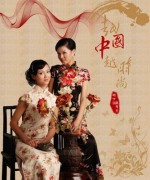
In the early years of the Qing Dynasty (1644—1911), long gowns featured collarless, narrow cuff in the shape of a horse’s hoof, buttons down the left front, four slits and a fitting waist. Wearers usually coiled up their cuff, and put it down when hunting or battling to cover the back of hand. In winter, the cuff could serve to prevent cold. The gown had four slits, with one on the left, right, front and back, which reached the knees. It was fitted to the body and rather warm. Fastened with a waistband, the long gown could hold solid food and utensils when people went out hunting. Men’s long gowns were mostly blue, gray or green; and women’s white.
Another feature of Manchu cheongsam was that people generally wore it plus a waistcoat that was either with buttons down the front, a twisted front, or a front in the shape of lute, etc.
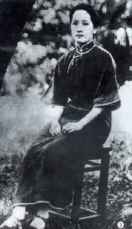
When the early Manchu rulers came to China, they moved their capital to Beijing and cheongsam began to spread in the Central Plains. The Qing Dynasty unified China, and unified the nationwide costume as well. At that time, men wore a long gown and a mandarin jacket over the gown, while women wore cheongsam. Although the 1911 Revolution turned over the rule of the Qing (Manchu) Dynasty, the female dress survived the political change and, with succeeding improvements, has become the traditional dress for Chinese women.

Till the 1930s, Manchu people, no matter male or female, all wore loose-fitting and straight-bottomed broad-sleeved long gowns with a wide front. The lower hem of women’s cheongsam reached the calves with embroidered flower patterns on it, while that of men’s cheongsam reached the ankles and had no decorative patterns.
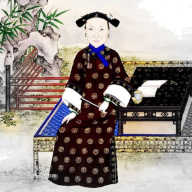
From the 1930s, cheongsam almost became the uniform for women. Folk women, students, workers and highest-tone women all dressed themselves in cheongsam, which even became a formal suit for occasions of social intercourses or diplomatic activities. Later, cheongsam even spread to foreign countries and became the favorite of foreign females.
After the 1940s, influenced by new fashion home and abroad, Manchu men’s cheongsam was dying out, while women’s cheongsam became narrow-sleeved and fitted to the waist and had a relatively loose hip part, and its lower hem reached the ankles. Then there appear various forms of cheongsams we see today that emphasize color decoration and set off the beauty of the female shape.

Why do Han people like to wear the cheongsam? The main reason is that it fits well the female Chinese figure, has simple lines and looks elegant. What’s more, it is suitable for wearing in all seasons by old and young.
The cheongsam can either be long or short, unlined or interlined, woolen or made of silk floss. Besides, with different materials, the cheongsam presents different styles. Cheongsams made of silk with patterns of small flowers, plain lattices or thin lines demonstrate charm of femininity and staidness; those made of brocade are eye-catching and magnificent and suitable for occasions of greeting guests and attending banquets.
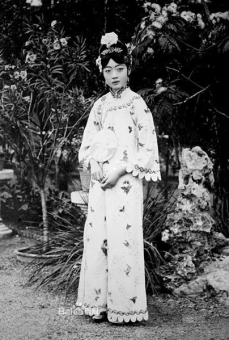
When Chinese cheongsams were exhibited for sales in countries like Japan and France, they received warm welcome from local women, who did not hesitate to buy Chinese cheongsams. Cheongsam features strong national flavor and embodies beauty of Chinese traditional costume. It not only represents Chinese female costume but also becomes a symbol of the oriental traditional costume.
1. What is the cuff used for if you wear Qipao?2. When did cheongsam almost become the uniform for women?
3. Why was Manchu men’s cheongsam out of fashion after the 1940s?
4. Why do Han people like to wear the cheongsam?

Seven hundred years ago, Arabic merchants found something unique from China which was as “white as jade, as bright as a mirror, as thin as paper, and with a sound as clear as a bell.” Soon it became a luxury item displayed in royal place.
The item was blue-white porcelain, from Jingdezhen, China.
Jingdezhen
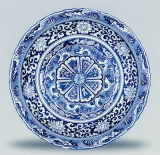
For more than 2,000 years. Jingdezhen was known as the porcelain capital of the world. Called Xinping in ancient times, the city of Jingdezhen in East China’s Jiangxi province was home to porcelain production as early as 200 B.C. in the Han Dynasty (206 B.C.-220 A.D.). During the reign of Emperor Jingde (1004-1007) of the Song Dynasty (960-1279), all of the products made here bore the royal Jingde mark, and the name of the city was changed to Jingdezhen (Jingde Town). For centuries, the city was considered China’s most important center for porcelain production. Here, ceramics were produced as far back as the Han Dynasty (206-220 B.C.). The imperial porcelain was so exquisite that it was described as being “as white as jade, as bright as a mirror, as thin as paper, with a sound as clear as a bell.”
Today, Jingdezhen remains a national center for porcelain production. The most famous types of porcelain from Jingdezhen are famille-rose porcelain, linglong porcelain, blue-white porcelain and color-glazed porcelain.
Blue-white porcelain

Among all porcelain produced in Jingdezhen, the most representative is blue-white porcelain. Blue-white porcelain originated in the Northern Song Dynasty (960-1127). During the Yuan and Ming dynasties (1271-1644) blue-white porcelain became increasingly popular, and since the 14th century manufacturers have shipped blue-white porcelain to world markets. The porcelain reached its peak in the Qing Dynasty (1644-1911). Its thin, translucent quality and attractive designs made it very valuable throughout Europe and the colonies, ranking first among blue-white porcelain nationwide.

Blue-white porcelain is the most famous among the four traditional types of porcelain produced in Jiangdezhen, and is famous as the “ever-lasting blue flower.” The blue-white style is created by drawing the design with cobalt pigment onto the stoneware body and painting over it with a transparent glaze. This style is also known as “underglazed blue.” The piece is then fired at a high temperature. Blue-white porcelain has been in production ever since thanks to its bright colors, simple yet elegant patterns, and smooth glaze that never fades.
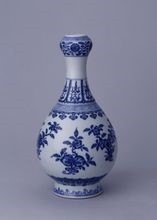
The Yuan Dynasty was a key period for the development of firing techniques for blue-white porcelain in China. Its unique characteristics were based on the techniques of former dynasties. It was during this period that blue and white porcelain was perfected and came to characterize the Ming Dynasty. China’s multi-colored porcelain was often given as gifts on diplomatic missions.
In 1979 Jingdezhen blue-white porcelain won a national golden prize and in 1985 it was honored with three gold medals at different international fairs. Since then, the name “Jingdezhen Blue-white Porcelain” has spread far and wide. It is by far a top product in the porcelain business, boasting the most prizes and the highest standards. (502 words)
1. How was the imperial porcelain described?2. When was Xinping changed to Jingde Town?
3. How many famous types of porcelain from Jingdezhen are there? What are they?
4. What made blue-white porcelain very valuable throughout Europe and the colonies?
5. What is “underglazed blue”?
6. When was it that blue-white porcelain in China was perfected?



